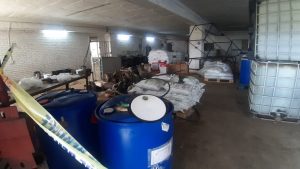The discovery of a child’s skull outside Krugersdorp may suggest intelligence in an ancient pre-human species. Scientists say the skull, found deep in the Rising Star cave system, could prove the species practiced death and burial rituals.
The skull was named “Leti” from the Setswana word “Letimela” meaning “lost one”. A replica of the skull was created from the pieces found on a ledge in the deepest reserves of the cave system.
A rolling hill in the Highveld, within its bowels, lays a mystery and an enigma. It’s here that parts of a skull belonging to a child between 4 and 6 years old were discovered. It had laid here for hundreds of thousands of years and suggests it was deliberately placed here by ancestors of human beings who could have practiced burial rites.
“It has not been washed in there, it didn’t crawl in there, and the body would be there. These fragile elements would not preserve if the body was not part preserved. There would be the harder elements, the femurs the denture bones of a child. It is highly likely these bones went in there as a skull. It wasn’t moved there by a scavenger because we would see the damages of that. We have to hypothesize, and this is in the papers if you read them, that we believe there were perhaps placed by a homo Naledi, individual, maybe 200 to 300 000 years ago,” says Prof Lee Berger, Paleoanthropologist at Wits University.
One thousand 550 specimens from at least 15 Homo Naledi individuals were recovered from the same cave system between 2013 to 2014.
“I think no one can deny the idea that something amazing was going on in this system 2 to 300 thousand years ago. Another species, and it still gives me goosebumps, was interacting with this cave system again, and again and again – and leaving only its dead behind,” Prof Berger added.
Finding the fragile brittle pieces of the skull or other fossils in caves is not the easiest of tasks.
“In some places, if it’s really narrow you have to manoeuvre your body to find the widest section. Sometimes you have to take your helmet off because this is actually too wide. And in some places if it’s too thin for your chest to get through you have to exhale for you to fit through,” says Dirk van Rooyen, Exploration team leader.
In 2013, scientists started exploring the rising star cave system. Since then they have discovered a new small brain hominoid with unique features and rituals. The exploration continues with more secrets to be revealed that might change the way humans look at themselves.






